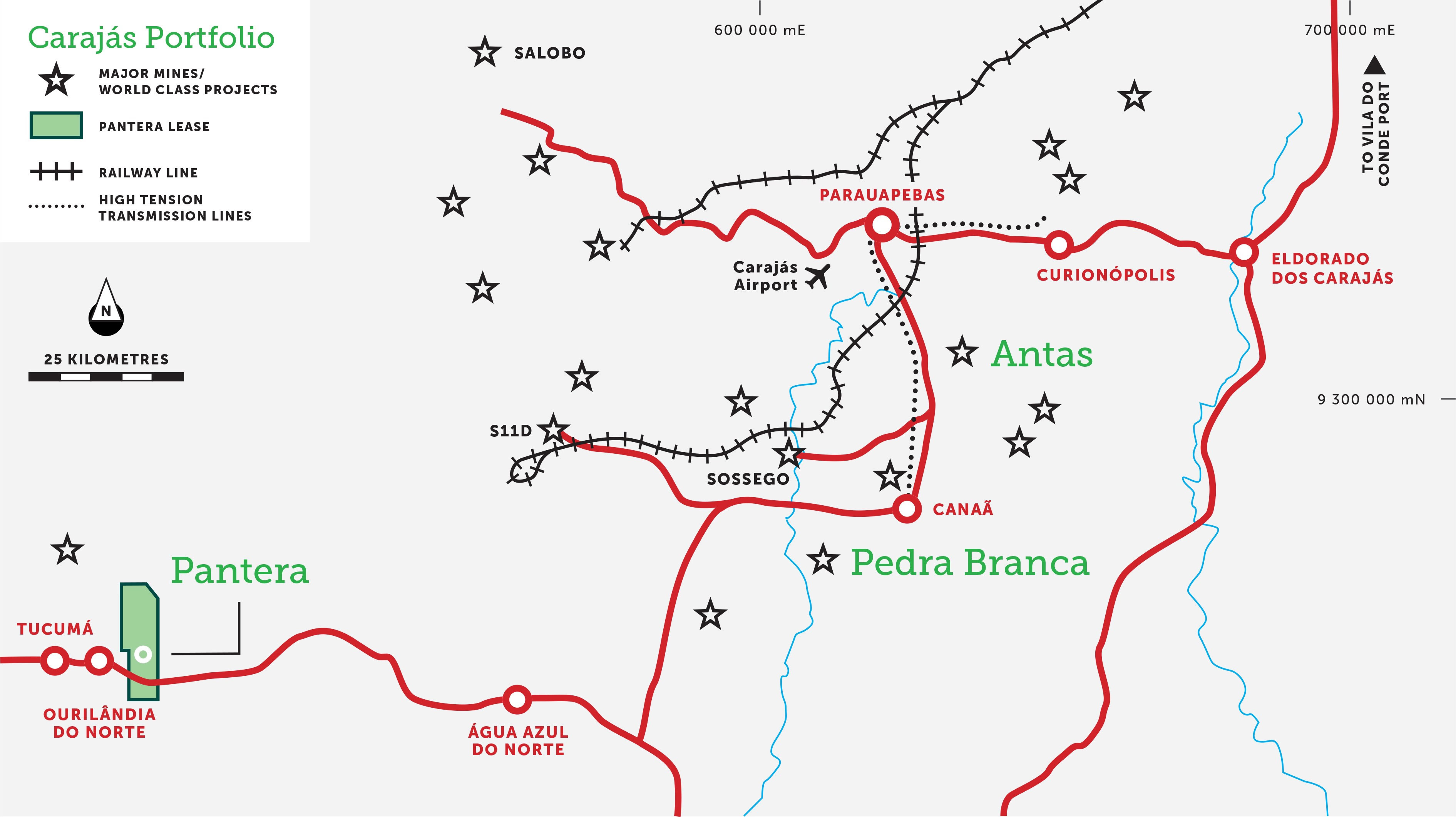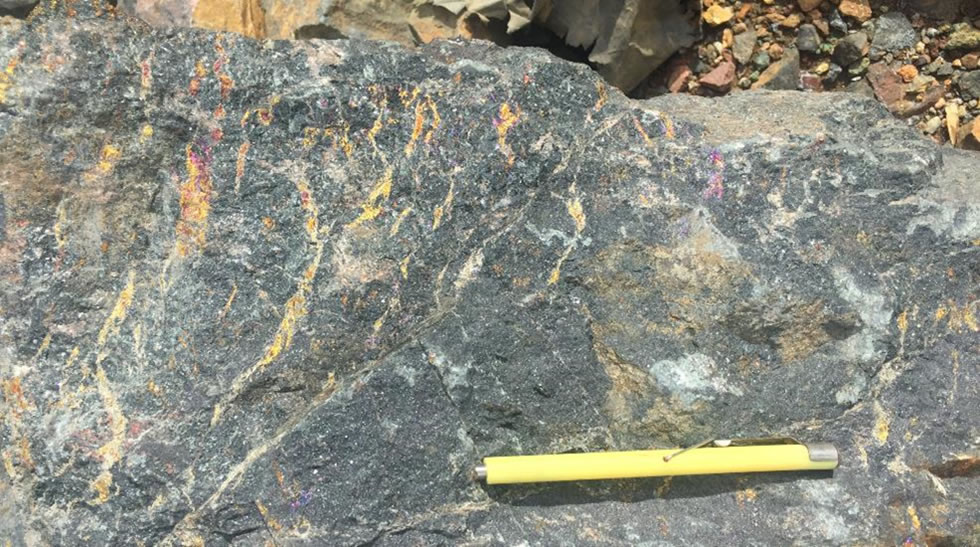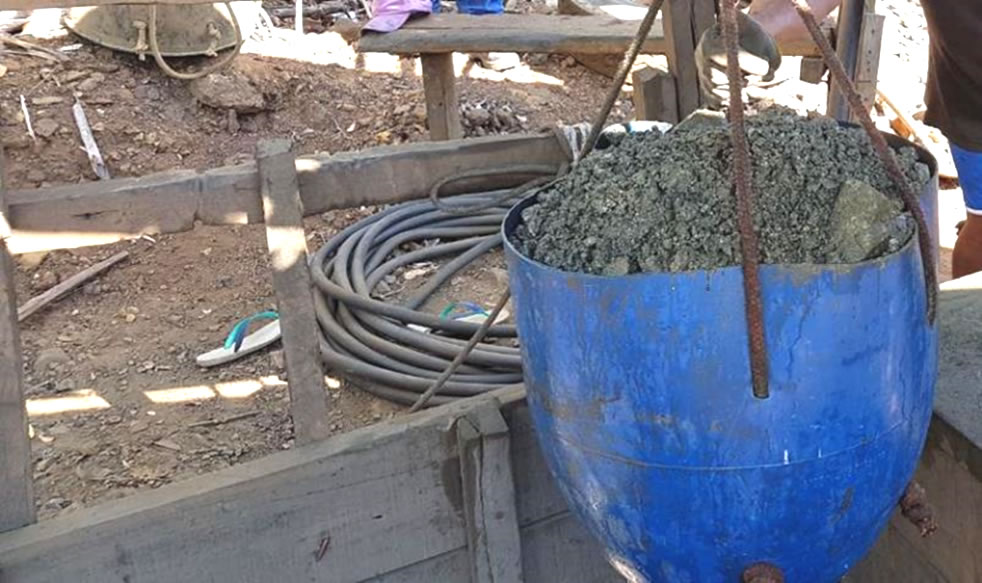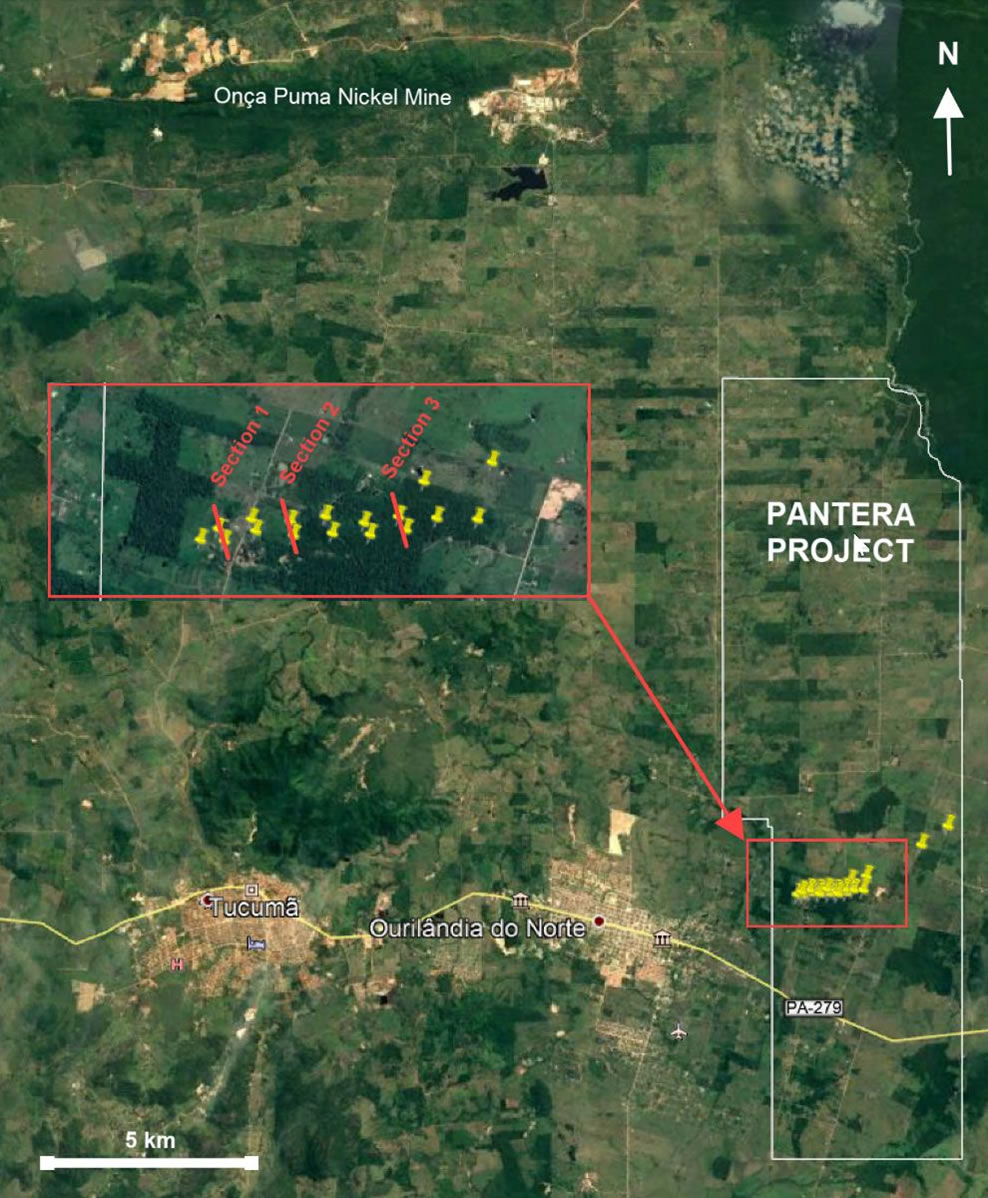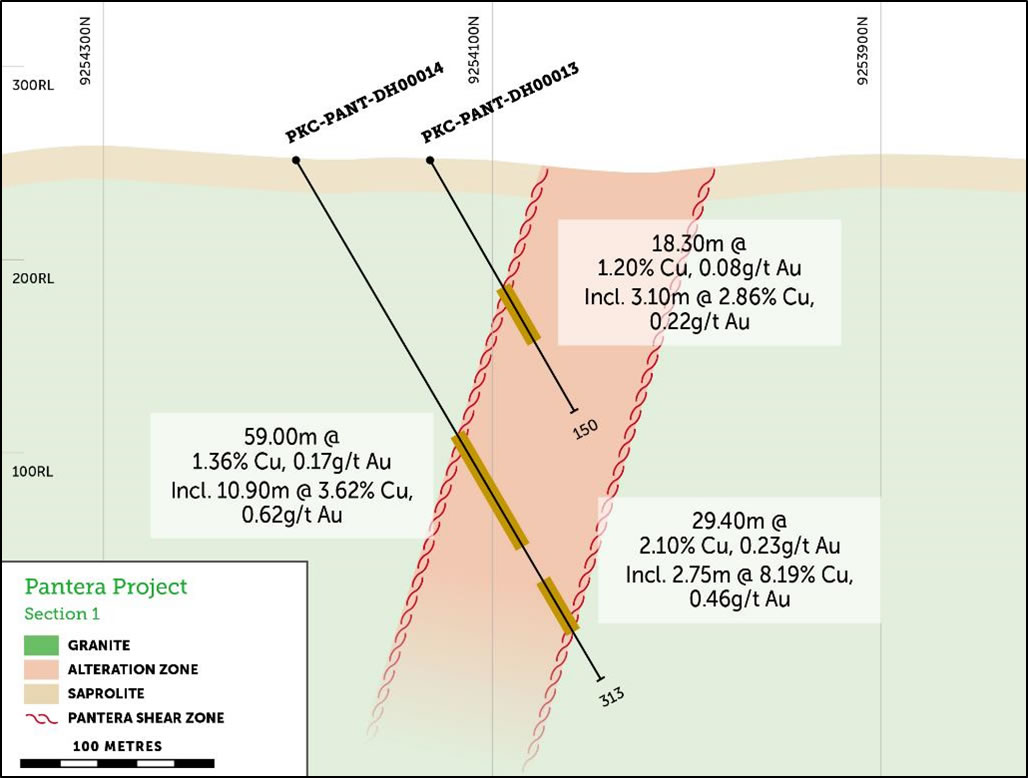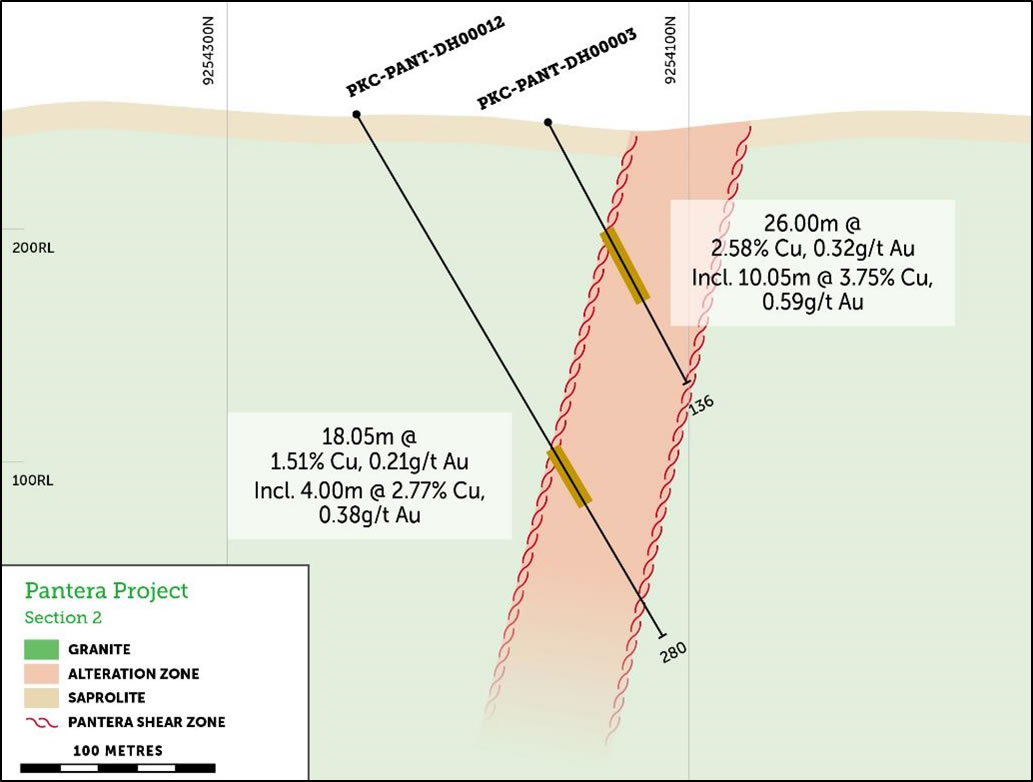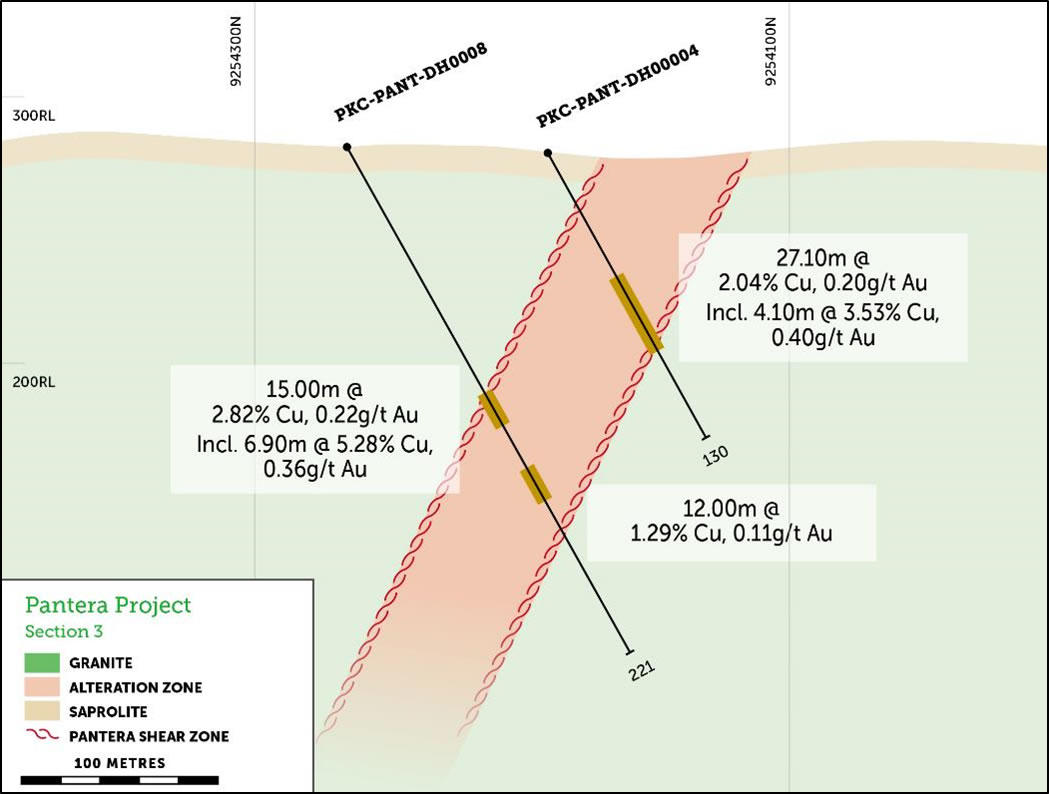Pantera is high-grade copper-gold exploration project covering approximately 100km2 in the Carajás in Northeastern Brazil.
Pantera broadens the Company’s exposure to copper, and the opportunity to substantially increase copper resources, reserves and production capacity within the next five years. In January 2018, Avanco agreed terms for an option to acquire 100% of Pantera from Vale.
An initial 5,000 metre drilling program is currently being assessed with the aim of identifying a maiden JORC Mineral Resource.
GEOGRAPHY & ENVIRONMENT
Geography
Pantera covers 9,700 hectares located in the south-east of the State of Pará near the towns of Ourilândia do Norte and Tucumá. It is accessed via paved roads 110 kilometres west of the Company’s Pedra Branca Project and 20 kilometres from Vale’s operating Onça Puma Nickel Mine.
Pantera is interpreted as IOCG style, comprising of steeply dipping tabular ore zones of predominantly copper (chalcopyrite rich with lesser bornite), and minor gold mineralisation.
Like other Neoarchean to Paleoproterozoic IOCG deposits in the southern portion of the Carajás, Pantera is associated with the WNW-ENE Canaã dos Carajás shear zone. Pantera is principally hosted by an intrusive granodiorite body.
At a deposit scale, the orientation of mineralisation parallels that of multiple shear zones within the host granitoid, which has been subject to pervasive hydrothermal alteration. Shear zones are typified by biotite-quartz schists, sericite schists and feldspathic schists and mylonitisation.
Primary mineralisation assemblages are dominated by chalcopyrite, lesser bornite, pyrite and pyrrhotite, and present as breccia style, massive sulphide and intense stock work mineralisation.
GEOLOGY
Pantera is interpreted as IOCG style, comprising of steeply dipping tabular ore zones of predominantly copper (chalcopyrite rich with lesser bornite), and minor gold mineralisation.
Like other Neoarchean to Paleoproterozoic IOCG deposits in the southern portion of the Carajás, Pantera is associated with the WNW-ENE Canaã dos Carajás shear zone. Pantera is principally hosted by an intrusive granodiorite body.
At a deposit scale, the orientation of mineralisation parallels that of multiple shear zones within the host granitoid, which has been subject to pervasive hydrothermal alteration. Shear zones are typified by biotite-quartz schists, sericite schists and feldspathic schists and mylonitisation.
Primary mineralisation assemblages are dominated by chalcopyrite, lesser bornite, pyrite and pyrrhotite, and present as breccia style, massive sulphide and intense stock work mineralisation.
MINERALISATION
Mineralisation and hydrothermal alteration at Pantera are associated with two distinct events. The first event was responsible for an initial stage of sodium-calcium alteration, whose intensity varies from moderate to pervasive, distal to proximal to mineralisation, forming mainly albite and actinolite. This stage was followed by calcium alteration, which formed abundant actinolite and apatite, evolving to a ferric-calcium alteration with magnetite and coarse-grained actinolite. Mineralisation associated with the first event occurs as networks of interconnected veins and hydrothermal breccias. Moreover, veins are filled by chalcopyrite and pyrite associated with magnetite and hydrothermal gangue minerals, such as albite, quartz, scapolite, epitope, actinolite, hastingsite, and chlorite. In the hydrothermal breccias, there is a predominance of chalcopyrite in the matrix, associated with magnetite and recrystallized quartz.
The second hydrothermal event overlaps the first and begins with potassium-silica alteration, which is developed more often in mylonitic zones, developing foliation and replacing actinolite with biotite and hastingsite. Mineralisation from the second hydrothermal event is disseminated along the mylonitic foliation, and also present as hydrothermal breccia. Mineralisation is again composed mainly by chalcopyrite and secondarily by pyrite, as well as gold associated with magnetite. Hydrothermal breccias are dominated by chalcopyrite in the matrix with some pyrite and bornite, associated with coarse-grained magnetite and hydrothermal minerals such as biotite, albite, hastingsite and apatite.
TENURE
Pantera is wholly contained within a single exploration licence of approximately 9,700ha. To maintain the area in good standing Avanco will prepare and submit the “final exploration report” to the regulatory authorities on behalf of Vale in March 2018. Thereafter the Company will seek the grant of a mining licence, by following the same permitting process as is underway at Pedra Branca.
MINING
Mineralisation at Pantera comes close to surface, with fresh sulphide mineralisation below the base of oxidation present at less than 20 metres from surface. Saprolite cover should be largely free-dig, with conventional drill and blast required to extract the underlying transition/fresh rock.
Management believes that the project presents few technical challenges for establishing an open pit operation, from which management believes there is a high likelihood of continuing into an underground operation.

